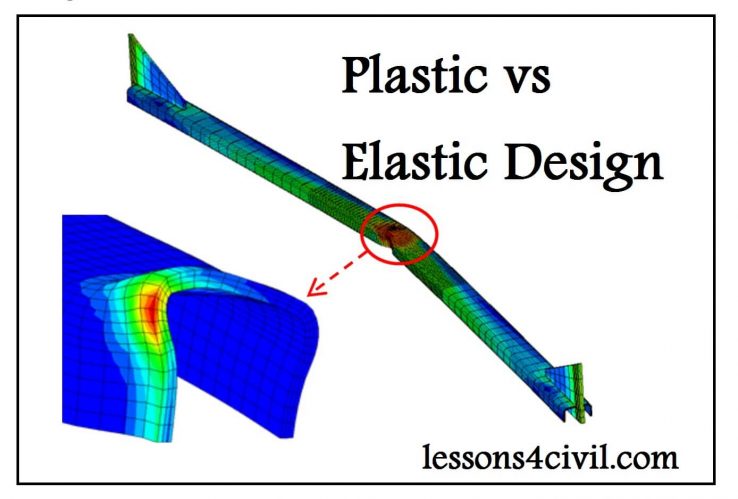Plastic design vs elastic design
Plastic design vs elastic design: honestly, the difference between these two terms was one the biggest ambiguities when I was in college. Plastic and elastic and designs are two different design approaches. Both of these methods are efficient to design an optimized steel structure. in the past, most of structural designers were reluctant to use plastic design because of a lack of sufficient criteria and experimental studies. But nowadays, plastic design is overwhelming.
Plastic hinge
To clarify what plastic design is, first I like to explain about the occurrence of plastic hinges. As you know, a cross section of a beam is subjected to pure bending, the stress distribution is according to figure below. It starts with elastic stresses. As the load increases it reaches to the ultimate stresses. At this stage the cross section can no longer tolerate more stress. But according to many studies, the structure is not going to collapse at this stage. Instead, if the structure is deformable enough, the bending moment will be redistributed in the members.
The idea of relying on the structures functionality after some of the cross sections has become plastic, is the main idea of this design method. In other words, in plastic design we allow some sections to get plastic. The occurrence of plastic hinges is common in earthquake loading.
The plastic hinges can occurs in all structural elements such as bracing, slabs, beams and shear walls. In figure below the probable locations of plastic hinges are shown for each structural elements.
American Institute of Steel Construction introduces the requirements of plastic designs for the first time in 1961. Since then many researcher have studied the advantages of plastic design in order to optimized the structural behavior of the buildings.
A good structural designer must be capable of predicting the pattern in which the plastic hinges are going to occur. In our video coarse you can learn how to do it with Etabs and Sap2000.



Comments